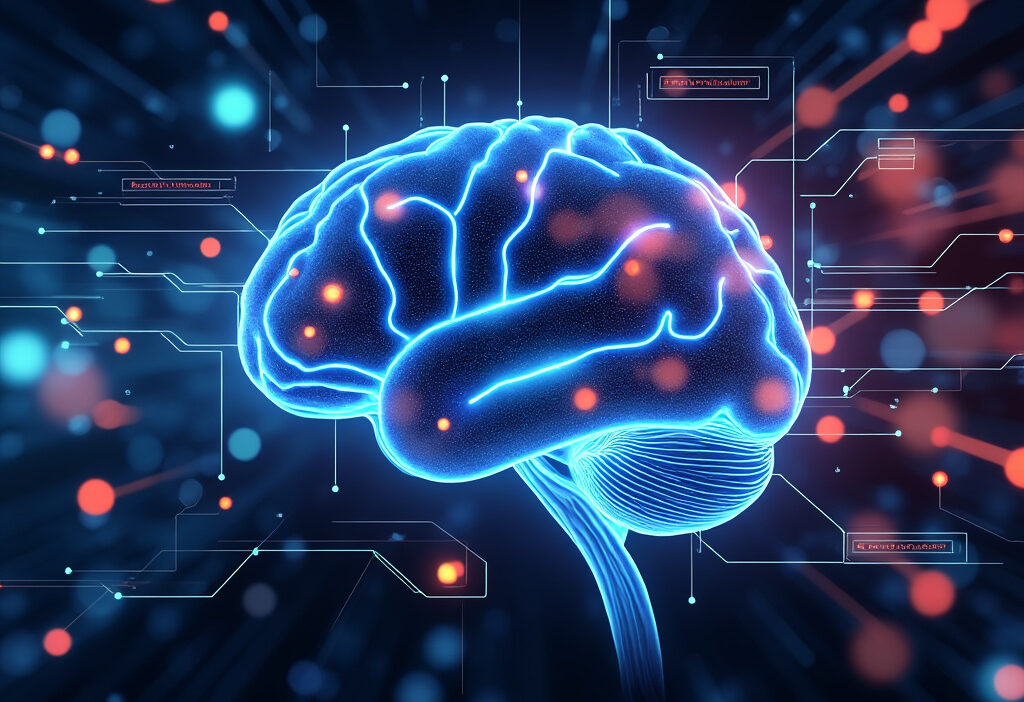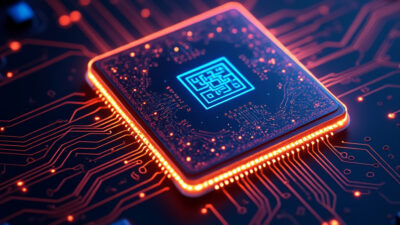Neurological Enhancement Merging Human Cognition with Technology
Neurological enhancement represents the cutting-edge intersection of neuroscience and technology, aiming to augment human cognition and sensory capabilities. This article delves into the transformative potential of merging the human brain with technological advancements, from brain-computer interfaces (BCIs) to neuroprosthetics. We explore the ethical, scientific, and practical dimensions of this rapidly evolving field, offering insights into how it could redefine human potential.
The Evolution of Neurological Enhancement
The journey of neurological enhancement began with early neuroscientific breakthroughs that laid the groundwork for today’s brain-computer interfaces (BCIs). In the late 19th century, Camillo Golgi and Santiago Ramón y Cajal revolutionized neuroscience by revealing the structure of neurons, earning a Nobel Prize in 1906. Their work provided the first glimpse into the brain’s intricate wiring, setting the stage for future exploration.
By the mid-20th century, Wilder Penfield pioneered cortical mapping, using electrical stimulation to identify functional brain regions during epilepsy surgeries. This demonstrated the brain’s plasticity and potential for external interaction. In the 1960s, José Delgado pushed boundaries further by implanting electrodes in animal and human brains, showcasing rudimentary mind-controlled devices—a precursor to modern BCIs.
The 1970s and 80s saw the rise of computational neuroscience, with John Hopfield and others modeling neural networks, bridging biology and artificial intelligence. Meanwhile, Jaques Vidal coined the term “brain-computer interface” in 1973, envisioning direct communication between brains and machines. Early BCI prototypes emerged in the 1990s, like Philip Kennedy’s invasive implants enabling locked-in patients to communicate via thought.
The 21st century accelerated progress with non-invasive technologies like EEG-based BCIs, spearheaded by companies like Emotiv and NeuroSky. Breakthroughs in machine learning refined signal interpretation, while projects like Neuralink and DARPA’s initiatives explored high-bandwidth, minimally invasive implants. Today, BCIs restore mobility, treat neurological disorders, and even augment cognition—fulfilling a century-long vision of merging human intellect with technology.
This evolution reflects a convergence of neuroscience, engineering, and computing, transforming speculative ideas into tangible tools. As we delve deeper into BCI mechanics in the next chapter, these historical foundations underscore how far we’ve come—and how much further we can go.
Understanding Brain-Computer Interfaces
Brain-computer interfaces (BCIs) represent a groundbreaking fusion of neuroscience and technology, enabling direct communication between the human brain and external devices. At their core, BCIs translate neural activity into actionable commands, bypassing traditional neuromuscular pathways. This is achieved through sensors that detect electrical, magnetic, or metabolic signals generated by the brain, which are then processed by sophisticated algorithms to interpret intent or control devices.
BCIs are broadly categorized into invasive and non-invasive systems. Invasive BCIs, such as implanted electrode arrays, offer high signal resolution by interfacing directly with neural tissue. These are particularly effective for restoring motor function in paralyzed individuals, as seen in projects like BrainGate. However, they carry risks like surgical complications and long-term immune rejection. Non-invasive BCIs, like EEG headsets, are safer and more accessible but suffer from lower signal fidelity due to interference from skull and scalp tissues. Emerging hybrid approaches, such as endovascular electrodes, aim to balance precision with minimal invasiveness.
Current applications span medical and consumer domains. Medically, BCIs assist in stroke rehabilitation, epilepsy monitoring, and prosthetic control. Beyond healthcare, they are explored for gaming, neurofeedback training, and even augmenting workplace productivity. Despite progress, challenges persist, including signal noise, user adaptation, and ethical concerns about privacy and autonomy. As the field evolves, BCIs promise to blur the line between human cognition and machine intelligence, setting the stage for deeper cognitive augmentation—a theme explored in the next chapter.
Cognitive Augmentation Through Technology
Cognitive augmentation through technology represents a transformative leap in human potential, leveraging brain-computer interfaces (BCIs) and neurostimulation to enhance memory, attention, and decision-making. Unlike BCIs that merely translate neural signals into commands, cognitive enhancement systems actively modify or amplify neural processes. For instance, transcranial direct current stimulation (tDCS) applies low electrical currents to specific brain regions, improving working memory and learning speed. Studies show tDCS can accelerate skill acquisition by up to 50%, with applications ranging from medical rehabilitation to military training.
Memory enhancement is another frontier. Hippocampal prosthetics, like those developed by USC, mimic the brain’s memory encoding process, restoring function in patients with Alzheimer’s or traumatic brain injury. Meanwhile, Neuralink and other startups are exploring implantable chips to boost memory recall by interfacing directly with hippocampal neurons. Non-invasive alternatives, such as EEG-based neurofeedback, train users to optimize brainwave patterns for better focus and retention.
Attention augmentation is being revolutionized by closed-loop BCIs that detect lapses in concentration and deliver real-time stimuli—like gentle pulses or auditory cues—to refocus the mind. The Focus Headband by Muse uses EEG to guide meditation, while DARPA’s Next-Generation Nonsurgical Neurotechnology (N3) program aims to enhance soldiers’ situational awareness through wearable BCIs.
Decision-making benefits from AI-driven neural analytics. Systems like Kernel’s Flow decode prefrontal cortex activity to predict choices, offering insights for optimizing high-stakes decisions in finance or healthcare. Ethical concerns persist, but the potential to elevate human cognition is undeniable, bridging gaps between biological limitations and technological possibilities. This sets the stage for neuroprosthetics, where sensory and motor enhancements further blur the line between human and machine.
Neuroprosthetics and Sensory Enhancement
Neuroprosthetics represent one of the most tangible intersections between human biology and technology, bridging gaps where natural sensory or motor functions are impaired. Unlike cognitive augmentation, which focuses on enhancing mental capabilities, neuroprosthetics aim to restore or even surpass the body’s innate abilities through direct neural integration. Cochlear implants, for instance, have transformed deafness into a treatable condition by converting sound waves into electrical signals that directly stimulate the auditory nerve. Modern iterations now offer near-natural hearing, with some models even integrating Bluetooth for seamless connectivity.
Similarly, retinal prosthetics like the Argus II system bypass damaged photoreceptors, using microelectrode arrays to stimulate the retina’s remaining cells. Patients who were once blind can now perceive shapes and movement, a leap toward restoring full vision. Meanwhile, advanced limb replacements have evolved beyond mechanical functionality. Prosthetic arms with neural interfaces, such as the LUKE Arm, decode motor intentions from residual muscle signals, enabling precise, intuitive control—sometimes even providing rudimentary tactile feedback through sensors.
Emerging research pushes boundaries further. Optogenetics, though experimental, could one day enable light-controlled neural activation for ultra-precise prosthetics. Meanwhile, sensory substitution devices—like vibrating vests that translate sound into tactile patterns—demonstrate how neuroplasticity allows the brain to reinterpret unfamiliar inputs. These innovations don’t just repair deficits; they hint at a future where human senses could expand beyond biological limits, integrating new modalities like magnetic field detection or enhanced night vision.
As AI-driven neural interfaces loom on the horizon (a topic explored in the next chapter), neuroprosthetics are laying the groundwork for a symbiotic relationship between human physiology and technology—one where restoration and enhancement become indistinguishable.
The Role of AI in Neurological Enhancement
Artificial intelligence is rapidly transforming the field of neurological enhancement, acting as a bridge between human cognition and advanced technology. By leveraging machine learning algorithms, AI can decode complex neural signals with unprecedented accuracy, enabling seamless interaction between the brain and external devices. Brain-computer interfaces (BCIs) powered by AI are no longer limited to basic command execution—they now adapt in real-time, learning from neural patterns to optimize performance. For instance, deep learning models analyze electroencephalography (EEG) data to predict user intent, allowing paralyzed individuals to control robotic limbs or communicate via thought alone.
Another breakthrough lies in AI-driven neurofeedback systems, which personalize cognitive training by monitoring brain activity and adjusting stimuli dynamically. These systems can enhance focus, memory, or emotional regulation by identifying neural inefficiencies and reinforcing optimal patterns. Companies are already deploying such tools for therapeutic applications, like treating ADHD or PTSD, while researchers explore their potential for healthy individuals seeking cognitive augmentation.
AI also plays a critical role in closed-loop neuromodulation, where implanted devices, such as those for epilepsy or Parkinson’s, use real-time data analysis to deliver precise electrical stimulation only when needed. This minimizes side effects and maximizes efficacy. Furthermore, generative AI is being tested to simulate neural responses, accelerating the development of next-generation BCIs without invasive human trials.
However, as AI integrates deeper into neurological enhancement, questions arise about data security and algorithmic bias—topics that will be explored in the next chapter. The synergy between AI and neuroscience is undeniable, but its responsible implementation will dictate whether it becomes a tool for empowerment or a source of new disparities.
Ethical Considerations and Societal Impact
The rapid advancement of neurological enhancement technologies, particularly brain-computer interfaces (BCIs) and cognitive augmentation, raises profound ethical questions that society must confront. As AI-driven systems become more adept at interpreting and influencing neural activity, the line between human autonomy and machine intervention blurs. Who owns the data generated by a BCI? Neural signals are deeply personal, and their misuse could lead to unprecedented breaches of privacy. Companies developing these technologies must ensure robust encryption and transparent data policies, but even then, the risk of exploitation remains high.
Another critical issue is consent. Unlike traditional medical procedures, cognitive enhancement often targets healthy individuals, raising questions about informed choice. Can someone fully comprehend the long-term effects of altering their brain function? Vulnerable populations, such as those with cognitive disabilities, may face undue pressure to adopt enhancements, further complicating ethical boundaries.
Inequality is perhaps the most pressing societal concern. If cognitive augmentation becomes widely available, it could exacerbate existing disparities. Wealthier individuals may gain access to superior enhancements, creating a cognitive elite while leaving others behind. This “neuro-divide” could reshape education, employment, and social hierarchies, deepening systemic inequities.
Moreover, the normalization of enhancement could stigmatize those who choose not to participate, framing natural cognition as inadequate. Policymakers must grapple with how to regulate these technologies to ensure equitable access while preventing misuse. The societal impact extends beyond individual choice—it challenges our very definition of humanity. As we integrate technology into our minds, we must ask: At what cost does progress come? The answers will shape the future of human identity and collective values.
The Future of Human-Technology Integration
The future of human-technology integration through neurological enhancement promises a paradigm shift in how we perceive cognition, agency, and even human identity. As brain-computer interfaces (BCIs) evolve, the line between biological and artificial intelligence will blur, enabling seamless communication between the human brain and external systems. Direct neural augmentation could allow real-time access to vast databases, instant language translation, or even shared cognitive experiences—effectively creating a collective intelligence network.
Advancements in nanotechnology and neural lace may lead to ultra-fine, biocompatible implants that integrate with the brain’s microstructure, enhancing memory retention, processing speed, and sensory perception without invasive surgery. Non-invasive techniques, such as transcranial stimulation paired with AI-driven neurofeedback, could democratize access to cognitive enhancement, reducing reliance on physical implants.
Long-term, the vision extends beyond individual augmentation to symbiotic ecosystems where humans and machines co-evolve. Imagine a world where predictive algorithms anticipate cognitive needs, adjusting neural inputs dynamically, or where cloud-based AI supplements human decision-making in real time. However, this raises questions about autonomy—will enhanced cognition remain “human,” or will it become a hybrid consciousness shaped by external algorithms?
The societal implications are profound. If neurological enhancement becomes mainstream, it could redefine education, work, and creativity, enabling unprecedented collaboration. Yet, as discussed in the previous chapter, equitable access and ethical boundaries must be addressed to prevent a new form of cognitive stratification. Meanwhile, the following chapter will explore the technical and biological hurdles—such as neural plasticity limits and regulatory frameworks—that must be overcome to realize this future. The journey toward seamless integration is as much about innovation as it is about navigating the delicate balance between augmentation and humanity.
Challenges and Limitations
Neurological enhancement technologies, particularly brain-computer interfaces (BCIs) and cognitive augmentation tools, promise transformative benefits but face significant challenges. Technical hurdles remain a primary barrier. Current BCIs struggle with signal resolution, often relying on invasive implants for high-fidelity neural data, which raises risks of infection or tissue damage. Non-invasive alternatives, like EEG, lack precision and bandwidth, limiting their utility for complex tasks. Additionally, decoding neural signals is computationally intensive, requiring advanced machine learning models that are still evolving.
Biological limitations further complicate progress. The brain’s plasticity allows adaptation, but long-term integration of artificial stimuli may lead to unintended rewiring or cognitive side effects. Immune responses to implants can degrade performance over time, and individual variability in neural anatomy makes standardization difficult. Ethical concerns also arise—enhancement could exacerbate societal inequalities, creating a divide between those with access to augmentation and those without.
Regulatory frameworks lag behind innovation. Most BCIs fall under medical device regulations, but cognitive enhancement blurs the line between therapy and augmentation, raising questions about oversight. Privacy risks are another concern; neural data is deeply personal, and breaches could expose thoughts or intentions. Widespread adoption also depends on public trust, which is fragile given historical skepticism toward neurotechnology.
Despite these challenges, progress continues. The next chapter will explore real-world successes, demonstrating how early adopters have overcome some limitations. However, for neurological enhancement to reach its full potential, interdisciplinary collaboration—bridging neuroscience, engineering, and ethics—will be essential to address these persistent obstacles.
Case Studies and Real-World Applications
Neurological enhancement technologies have already transformed lives, offering tangible benefits in both medical and non-medical contexts. One compelling case is that of a paralyzed individual who regained partial mobility through a brain-computer interface (BCI). By implanting electrodes in the motor cortex, researchers enabled the patient to control a robotic arm with neural signals, restoring the ability to grasp objects independently. This breakthrough not only improved quality of life but also demonstrated the potential for BCIs to bridge gaps created by spinal cord injuries.
Another notable example involves patients with locked-in syndrome, a condition where cognitive function remains intact but voluntary muscle control is nearly absent. With non-invasive BCI systems, these individuals can communicate using eye-tracking or neural patterns, bypassing their physical limitations. One patient even authored a book by selecting letters through a neural speller, proving that cognitive augmentation can restore agency in the most restrictive circumstances.
Beyond medical applications, neurological enhancement is making strides in cognitive performance. A study involving transcranial direct current stimulation (tDCS) showed that participants using the technology improved their learning speed by 30% during language acquisition tasks. Similarly, military pilots using neurofeedback systems achieved heightened situational awareness, reducing reaction times in high-stress scenarios.
These real-world successes highlight the transformative potential of merging human cognition with technology. However, as discussed in previous chapters, challenges like ethical concerns and regulatory barriers remain. The next section will explore how society can prepare for a future where such enhancements become mainstream, ensuring equitable access and responsible implementation. The progress so far underscores the need for thoughtful adaptation as we step into this new era of cognitive augmentation.
Preparing for a Neuro-Enhanced Future
As neurological enhancement technologies advance, individuals and society must proactively prepare for their widespread integration. The transition to a neuro-enhanced future requires thoughtful planning across education, policy, and personal adaptation to ensure equitable access, ethical use, and long-term benefits.
Education and Awareness
Public understanding of brain-computer interfaces (BCIs) and cognitive augmentation must expand beyond niche scientific circles. Schools and universities should incorporate neurotechnology literacy into curricula, covering both technical aspects and ethical implications. Workshops and open-access resources can demystify these tools, empowering individuals to make informed decisions. Professionals in healthcare, tech, and policy must also receive specialized training to navigate the challenges of implementation and regulation.
Policy and Regulation
Governments and institutions must establish frameworks to prevent misuse and ensure accessibility. Policies should address data privacy, as neural data is highly sensitive, and equity, to prevent a cognitive divide between those who can afford enhancements and those who cannot. International collaboration will be crucial to standardize ethical guidelines, similar to global bioethics agreements. Regulatory bodies must remain agile, adapting to rapid advancements while safeguarding against exploitation.
Personal Readiness
Individuals should stay informed about emerging neurotechnologies and assess their personal and professional relevance. Early adopters can experiment with non-invasive tools like neurofeedback or meditation apps to build familiarity. Mental resilience is equally important—enhancements may alter cognition, requiring psychological preparation for potential shifts in identity or capability. Engaging in discussions about ethical boundaries ensures personal values align with technological adoption.
By addressing these areas, society can foster a future where neurological enhancements amplify human potential without compromising autonomy or equity. The groundwork laid today will determine whether these technologies become a force for collective progress or a source of division.

Conclusions
Neurological enhancement stands at the frontier of human evolution, offering unprecedented opportunities to expand our cognitive and sensory capabilities. While the potential is immense, it is accompanied by significant ethical and practical challenges. As we navigate this complex landscape, a balanced approach that embraces innovation while addressing societal concerns will be crucial. The future of human cognition is not just biological—it is technological.



